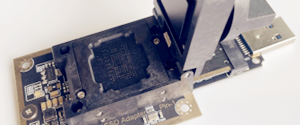Defect Mapping and Spare Sectoring Of Hard Disk
Despite the precision manufacturing processes used to create hard disks, it is virtually impossible to create a disk with tens of millions of sectors and not have some errors show up. Imperfections in the media coating on the platter or other problems can make a sector inoperable. A problem with a sector, if uncorrected, would normally manifest as an error when attempting to read or write the sector, but can appear in other ways as well. Most of us have experienced these errors on occasion when using floppy disk drives.
Modern disks use ECC to help identify when errors occur and in some cases correct them, however, there will still be physical flaws that ECC cannot overcome, and that therefore prevent parts of a disk from being used. Usually these are individual sectors that don’t work, and they are appropriately enough called bad sectors. Tracks where there are bad sectors are sometimes called bad tracks.
If you’ve ever used a disk information utility on a floppy disk (or on a very old hard disk), you’ve likely at some point seen a report showing a few kilobytes worth of bad sectors. However, if you run such a utility on a modern hard disk, you will normally never see any reports of bad sectors on the disk. Why is this?
Sectors that are bad cannot be used to store data, for obvious reasons: they are bad because they cannot be trusted to reliably write and/or reproduce the data at a later time. It is therefore necessary for some part of the system to keep track of where they are, and not use them. The best way for this to be done is for the drive to detect and avoid them. If the drive does not do this, the operating system must do it. If any bad sectors are not detected until after they have been used, data loss will probably result.
To allow for maximum reliability then, each disk drive is thoroughly tested for any areas that might have errors at the time it is manufactured. All the sectors that have problems or are thought to be unreliable, are recorded in a special table. This is called defect mapping. Some drives go even further than this, mapping out not only the sectors that are questionable, but the ones surrounding them as well. Some drives will map out entire tracks as a safety precaution.
On older hard disks, these problem areas were actually recorded right on the top cover of the disk, usually in hand-writing by the technician testing the drive! This process was necessary because low-level formatting was done by the company assembling the PC–or even the end-user–and this information was used to tell the controller which areas of the disk to avoid when formatting the disk. Part of the low-level format process was to have the person doing the LLF tell the controller which sectors were bad, so it would avoid them, and also tell any high-level format program not to try to use that part of the disk. These markings are what cause “bad sectors” reports to show up when examining older hard disks: these are the areas the disk has been told not to use. Since floppy disks are low-level formatted and high-level formatted at the same time, the same situation applies, even today. If any sectors cannot be reliably formatted, they are marked as “bad” and the operating system will stay away from them.
While early PC users accepted that a few bad sectors on a drive was normal, there was something distasteful about plopping down $1,000 for a new hard disk and having it report “bad sectors” as soon as you turned it on. There is no way to produce 100% perfect hard disks without them costing a small fortune, so hard disk manufacturers devised an interesting compromise.
On modern hard disks, a small number of sectors are reserved as substitutes for any bad sectors discovered in the main data storage area. During testing, any bad sectors that are found on the disk are programmed into the controller. When the controller receives a read or write for one of these sectors, it uses its designated substitute instead, taken from the pool of extra reserves. This is called spare sectoring. In fact, some drives have entire spare tracks available, if they are needed. This is all done completely transparently to the user, and the net effect is that all of the drives of a given model have the exact same capacity and there are no visible errors. This means that the operating system never sees the bad areas, and therefore never reports “bad sectors”. They are still there though, just cleverly hidden.
Really, when you think about it, the hard disk companies are sacrificing a small amount of storage for “good looks”. It would be more efficient to use all of the sectors on the disk and just map out the few bad ones. However, sometimes marketing wins out over engineering, and it seems that more people want the warm feeling of thinking they have a perfect drive, even if it costs them theoretical storage in the process. Today’s drives are so enormous that few people would even care much anyway about a few extra megabytes, but that wasn’t always the case!
Due to spare sectoring, a brand new disk should not have any bad sectors. It is possible, however, for a modern IDE/ATA or SCSI hard disk to develop new bad sectors over time. These will normally be detected either during a routine scan of the hard disk for errors (the easy way) or when a read error is encountered trying access a program or data file (the hard way). When this happens, it is possible to tell the system to avoid using that bad area of the disk. Again, this can be done two ways. At the high level, the operating system can be told to mark the area as bad and avoid it (creating “bad sector” reports at the operating system level.). Alternately, the disk itself can be told at a low level to remap the bad area and use one its spares instead. This is normally done by using a zero-fill or diagnostic utility, which will scan the entire disk surface for errors and tell the controller to map out any problem areas.
Note: Bad sectors on a modern hard disk are almost always an indication of a greater problem with the disk. A new hard disk should never have bad sectors on it; if you buy one that does have bad sectors, immediately return it to the vendor for exchange (and don’t let them tell you “it’s normal”, because it isn’t.) For existing hard disks, the vast majority of time, a single bad sector that appears will soon be accompanied by friends. While you can map out and ignore bad sectors, you should make sure to contact the vendor if you see bad sectors appearing during scans, and make sure the data is backed up as well. Personally, I will not use any hard disk that is developing bad sectors. The risk of data loss is too high, and hard drives today are inexpensive compared to the cost of even an hour or two of recovering lost data (which takes a lot more than an hour or two!).
On some disks, remapped sectors cause a performance penalty. The drive first seeks and reads the sector header of the data, thinking it will be there; then, it sees that the sector has been remapped, and has to do another seek for the new sector. Newer drives using the No-ID sector format eliminate this problem by storing a format map, including sector remaps, in the memory of the drive’s controller.
Data recovery Salon welcomes your comments and share with us your ideas, suggestions and experience. Data recovery salon is dedicated in sharing the most useful data recovery information with our users and only if you are good at data recovery or related knowledge, please kindly drop us an email and we will publish your article here. We need to make data recovery Salon to be the most professional and free data recovery E-book online.
World’s Top Data Recovery Hardware Tools
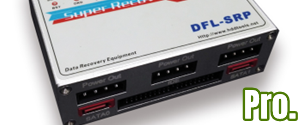
Easy to use at good price
Recover SATA, IDE, External HDDs, NVME SSDs, etc Order Now here
POTABLE DEVICE & NVME SSD RECOVERY TOOL
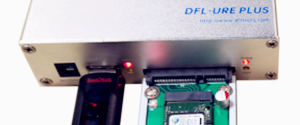
Recover USB Device and NVME SSDs at high speed! Read Details here.
DFL-PCIE DATA RECOVERY RECHARGE
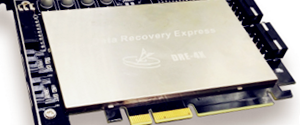
Best data recovery hardware tool to start a data recovery business, read details here
RECOVER SCRATCHED HDDS

Recover lost data from scratched hard drives, read details here.
SURFACE PRO. RECOVERY
BEST HEAD REPLACEMENT TOOLS
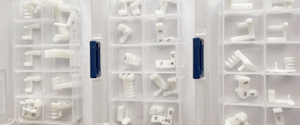
The most cost-effective head replacement tools for Seagate, WD, Samsung, Hitachi, Toshiba, Fujitsu

